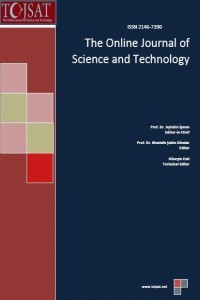Factors affecting the effective implementation of e-learning in educational institutions
Factors affecting the effective implementation of e-learning in educational institutions
E-learning, educational institutions, students, lecturers, administrators,
___
- Afshari, M., Abu Bakar, K., Su Luan, W., Afshari, M., Say Fooi, F., & Abu Samah, B. (2010). Computer use by secondary school principals. The Turkish Online Journal of Educational Technology, 9(3), 8-25.
- Afshari, M., Abu Bakar, K., Su Luan, W., Abu Samah, B. & Say Fooi, F. (2008). School Leadership and Information Communication Technology, The Turkish Online Journal of Educational Technology, 7(4), 82-91.
- Anderson, R. E., & Dexter, S. (2005). School technology leadership: An empirical investigation of prevalence and effect. Educational Administration Quarterly, 41(1), 49-82.
- Adams, J. C., & Seagren, A. T. (2004). Distance education strategy: Mental models and strategic choices. Online Journal of Distance Learning Administration, 7(2).
- Ali, N., & Ferdig, R. (2002). Why not virtual reality? The barriers of using virtual reality in education. Paper presented at the Society for Information Technology & Teacher Education International Conference Annual: Proceedings of SITE 2002, (pp. 1119-1120) http://www.editlib.org/index.cfm?fuseaction=Reader.ViewAbstract&paper_id=10 946
- Asemi, F. (2006). Information Technology and National Development in Iran. IEEE, International Conference on Hybrid Information Technology (ICHIT'06).
- Behar-Horenstein, L. S., & Niu, L. (2011). Teaching critical thinking skills in higher education: A review of the literature. Journal of College Teaching & Learning (TLC), 8(2).
- Benzie, D. (1995). IFIP Working group 3.5: using computers to support young learners. In J. D.
- Tinsley, & T. J. van Weert (Eds.), World conference on computers in education VI: WCCE_ 95 liberating the learner (pp. 35–42). London: Chapman & Hall.
- Broadbent, B. (2003). Facing the dark side: Overcoming e-learning resistance. Retrieved May 3, 2011, from http://www.learningcircuits.org/2003/aug2003/elearn.html
- Brzycki, D., & Dudt, K. (2005). Overcoming barriers to technology use in teacher preparation programs. Journal of Technology and Teacher Education, 13(4), 619-641.
- Bosley, C. & Moon, S. (2003). Review of Existing Literature on the Use of Information and Communication Technology within an Educational Context. Centre for Guidance Studies, University of Derby.
- Buchan, J. F., & Swann, M. (2007). A Bridge too Far or a Bridge to the Future? A case study in online assessment at Charles Sturt University. Australasian Journal of Educational Technology, 23(3), 40
- ISSN: 2146-7390
- Başlangıç: 2011
- Yayıncı: The association of science, education and technology
Putting Customer in Charge of Design: Opportunities and Challenges
Study of Xanthane (KAX) Adsorption on Galena : Separation by Flotation
Potency of Aqueous White Grubs Extract Against CCl4 Induced Liver Diseases in Rats
M. S. SULE, A. J. ALHASSAN, Y. ABDULMUMUNİ
Zakia OLAMA, H. HOLAİL, S. MAKKİ
Anti-inflammatory activity of acetonic extract of Pistacia lentiscus fruits
Hammama BOURİCHE, Safia KHALFAOUİ, Hichem MEZİTİ, Abderrahmane SENOTOR
An optimal control problem by controlling heat source of the surface of tissue
1Rikhiya Dhar, Ranajit Dhar, Piyanka Dhar
Optimalization of transport and logistic processes by simulation
Martin KENDRA, Jana LALİNSKá, Juraj Amaj
